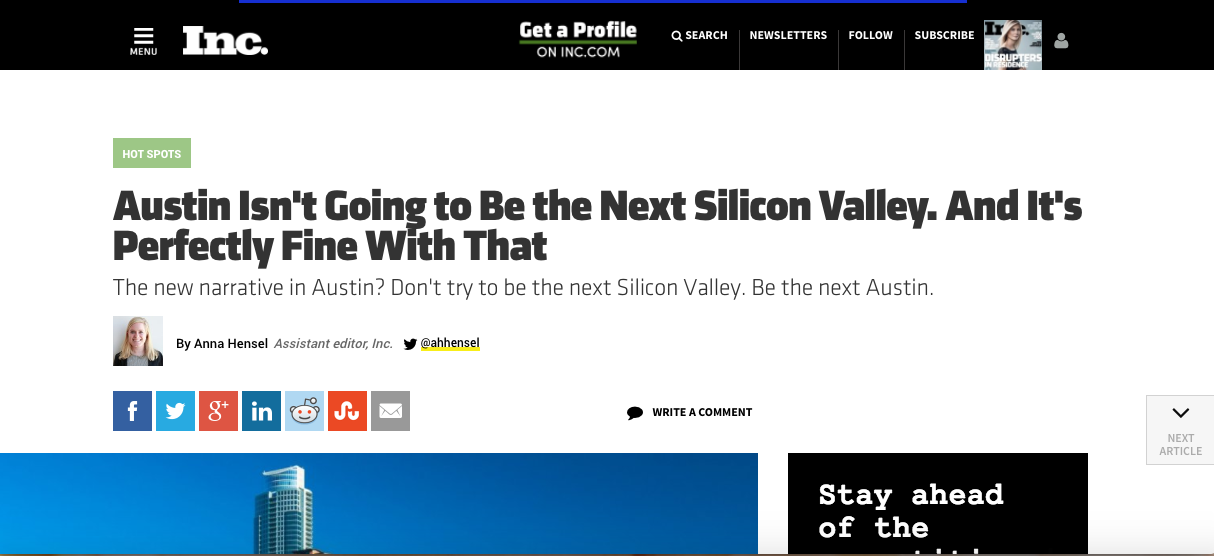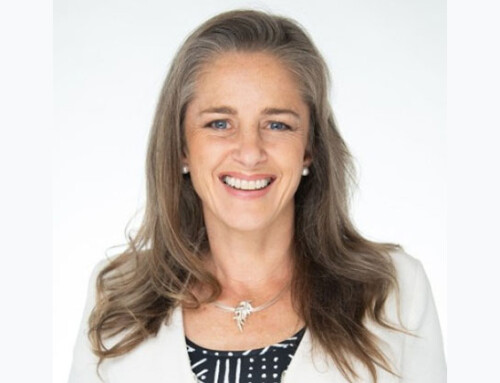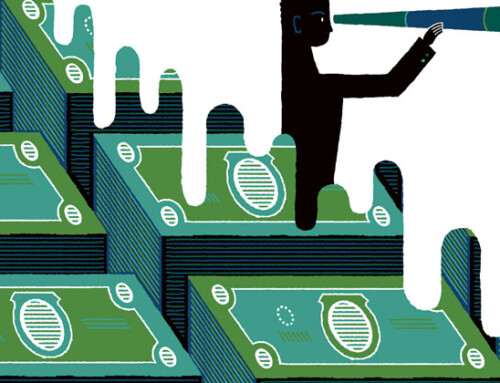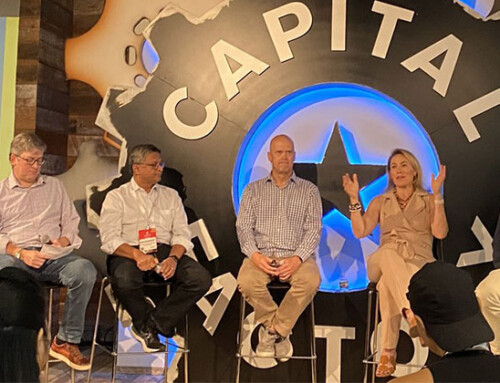This article originally appeared in Inc.
Each March, Austin hosts throngs of out-of-towners who know it only as the birthplace of South by Southwest, the annual music, entertainment, and technology festival. The city has picked up a number of honors that apply year round, however: The Kauffman Foundation named Austin the No. 1 city in the U.S. for startups two years in a row, U.S. News & World Report deemed it the best place to live in the U.S. in 2017, and local businesses attracted $590.4 million in venture capital in 2016.
Even so, Austin is a case study in just how difficult it is to create a startup ecosystem that checks all of the boxes needed to become a powerhouse. The city has had some notable success stories–HomeAway (sold to Expedia for $3.9 billion in 2015), Indeed (reportedly sold for around $1 billion in 2012), and Whole Foods (which went public in 1989 and did more than $15 billion in revenue in 2016)–but it’s still a much shorter list than those in cities like San Francisco and New York.
While Austin may never measure up to those bigger ecosystems that are flush with more funding, it’s a city that’s increasingly comfortable just being itself. And that’s something local entrepreneurs say startup hubs around the country can learn.
The makings of a mature tech community
Founded in 1987 to promote Austin’s creative community to the rest of the U.S., SXSW now draws tens of thousands of visitors to the city every year. Last year, the event had a $325 million impact on the local economy, according to an analysis conducted by the Austin Chamber of Commerce.
“It really cemented the brand of Austin as a community where innovation and great ideas are germinated,” says Michael Rollins, president of the Austin chamber.
As SXSW began to take off, Austin’s startup ecosystem was buoyed by a number of successes in the technology sector, most notably Dell and software company Trilogy, founded in 1984 and 1989 respectively. By the end of 1999, venture capitalists had poured $1.1 billion into Austin companies–just in time for the dot-com bubble to burst shortly thereafter. While the venture capital money started drying up as a result, Austin still had the people who knew how to build companies.
Jon Loyens, now the co-founder and chief product officer of Austin startup Data.world, was one of those who was recruited to join the local tech scene in the early 2000s, and his story is a common one. He met all three of his Data.world co-founders as he did tours of duty at Trilogy, marketing software-as-a-service company BazaarVoice, and vacation rental site HomeAway. The four banded in 2015 to launch Data.world, a public benefit corporation that aims to build a Wikipedia-like service for data sets.
“You have a lot of experience here in Austin–that I think is under the radar–that has the knowledge about building these mission-driven companies,” Loyens says.
The talent pool in Austin, which is rich in data management, has been buoyed by the University of Texas at Austin and its technology incubator program. Apple, Google, and Oracle have all taken notice and now have outposts in the city.
The competition
With startups that have raised hundreds of millions in venture capital, several billion-dollar exits, and large tech companies that are willing to invest in the local economy, Austin’s entrepreneurial ecosystem is leaps and bounds ahead of other cities in the U.S. Nonetheless, just in the fourth quarter of 2016 Silicon Valley startups received $3 billion more in funding than Austin startups did–a gap that won’t be closing anytime soon.
Joshua Baer, the founder and executive director of Capital Factory, an organization that’s the self-described “center of gravity for entrepreneurs” in the city, cites several reasons Austin hasn’t been able to attract as much capital as the older and more established ecosystem in Northern California. Silicon Valley has a higher bar as to what makes a successful exit–“we can’t point to a bunch of $20 billion to $30 billion companies,” he says. Mergers and acquisitions often happen with companies outside of Austin, making it less likely that that money is reinvested in the city’s ecosystem. Baer says he’s also heard investors outside of Austin complain that the city’s entrepreneurs aren’t “thinking big enough,” and aren’t as interested as their Silicon Valley counterparts in building monopolistic, world-changing platforms.
But, for companies like Data.world, that gives Austin a unique advantage–it makes the city a more fertile place for mission-driven companies, rather than companies focused on achieving unicorn status as quickly as possible.
The future
Both ecosystem builders like Baer and entrepreneurs like Loyens tout Austin’s strong sense of community as one of the advantages the city has over Silicon Valley (in addition to a lower cost of living). They say the city’s established players are more willing to give young entrepreneurs a chance.
Miguel Garza, the co-founder and CEO of a three-year-old purveyor of gluten-free tortillas called Siete Family Foods, was able to get his product into Whole Foods stores by dropping off his company’s initial product–an almond flour-based tortilla–in a plastic bag on the doorstep of Whole Foods’ Austin office. Today, his company has its product in more than 500 retailers, and according to Forbes, is one of the 2 percent of Latino-owned businesses in the U.S. whose revenue exceeds $1 million.
“Because Austin is a more manageable size, there’s a lot more opportunity in my mind to have cross-functional types of innovation,” says Sara Brand, the founding general partner of True Wealth Ventures, a firm focused on women entrepreneurs in the fields of consumer health and greener technologies that’s in the process of closing its first fund. Brand used to live in the Bay Area, where, she says, persuading some people to drive 30 miles down the peninsula for a meeting could be a tough sell. In Austin, by contrast, people are more accessible because they are more willing to get outside their bubble.
Still, the talk of community building rather than unicorn building doesn’t make the city a perfect fit for entrepreneurs who want to build the next Uber or Snapchat. Rather, some of the community’s leaders want to push a new narrative–that cities should strive to be the next Austin.
“Most of these other cities around the world are realizing they are never going to be Silicon Valley,” Baer says. “But they look at Austin and say, ‘If we try really hard and make some smart choices, in 20 years, we could be Austin,’ and that is achievable and that is realistic.”






